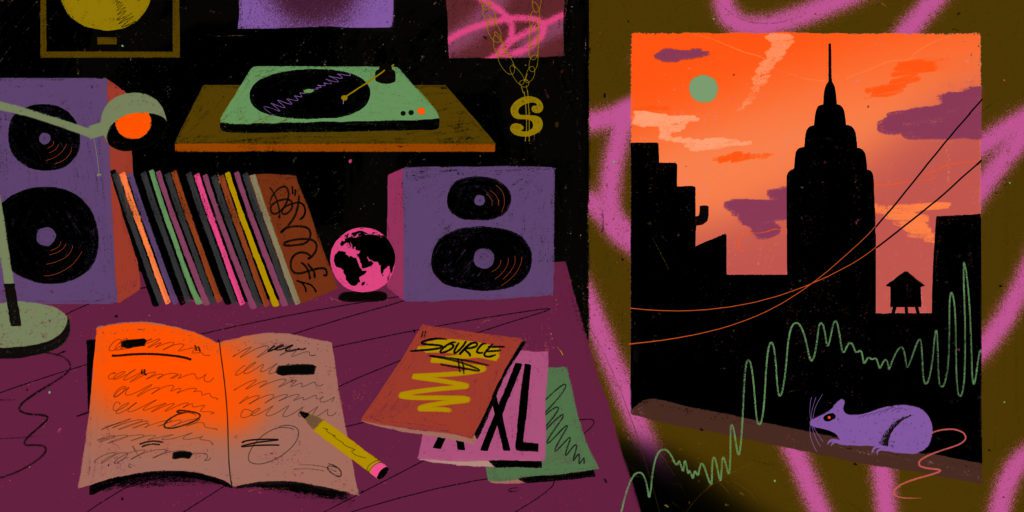The History of Hip Hop
Hip Hop first emerged in largely African American, Afro-Caribbean, and Latino communities of the Bronx and then spread to Harlem and other boroughs of New York City in the early 1970s. It is a creative expression, sensibility, and aesthetic that encompasses a wide range of performance expressions, including graffiti, break dancing, DJ-ing, vinyl records, and MC-ing. Largely due to the popularity of rap music, hip-hop had become an internationally recognized cultural phenomenon by the 1990s. Rap music is the most celebrated form of hip-hop, which emphasizes stylized verbal accompaniment called “beats” or “tracks.”
1970s and the Era of Hip Hop DJs
During the early stages of hip, DJs were the focal point, providing the musical backdrop for the other forms of hip-hop expression. DJs served as the foundation and unifying element of hip-hop culture. Dos were crucial in defining the musical features that distinguished rapping from poetry recitation and other types of oral performance. Hip hop DJs transformed their phonographs, turntables, mixing units, and vinyl records into musical instruments, The DJs who are most frequently credited with the development of hip-hop a cultural expression of music, graphic art, spoken word, and dance, are three Bronx DJs by the names of Kool DJ Herc, Arika Bambaataa, and Grandmaster Flash.
1972-85: Mainstream Rap Music
Hip-hop entered into the consciousness of mainstream urban and non urban America starting in the late 1970s. “Rapper’s Delight” recorded in 1979 by the New Jersey-based group, the Sugar Hill Gang, was rap music’s first commercial hit. Rappers formed remixes, or new songs by adding their voices to live recorded instruments or instrumental verses, which was similar to Jamaican dub tracks. Bambaataa’s “Planet Rock” (1982) laid the foundation for sampling, as it used a short, angular melodic phrase from “Trans-Europe Express” (1977). The 1980s brought forth MIDI (Musical Instrument Digital Interface) technology, which allowed for a faster and more convenient way to produce hip-hop music, prior to copyright laws that later restricted sampling music. Digitally recorded phrases (samples) were used almost exclusively by the mid-1980s, taking taking the placenof electro-funck’s synthesized beats. Women have been a part of hip hop since the beginning, despite it appearing a male dominated genre to the public. Some female artists were popularized through “answer” songs by the mid-1980s, which ridiculed popular songs previously recorded by male acts. An example is Roxanne Shante’s “Roxanne’s Revenge,” responding to UTFO’s 1984 hit song “Roxanne, Roxanne.”
The Diversity of Hip Hop
Hip-hop experienced a growth spurt from the mid-1980s to the mid-1990s, which is referred to as hip-hops “Golden Age” because of the many creative streams that began to emerge. Hardcore, classic, pop, and alternative, became recognized as distinctive styles. The mid-1980s broadened the discourse and general representation of women in hip-hop. This included Missy Ellit as the first successful female rapper to earn recognition as a songwriter, singer, rapper, and producer. It also included Lauryn Hill and her solo album The Miseducation of Lauryn Hill, for which she won 5 Grammys out of 8 nominations. Lil’ Kim, Foxy Brown, Eve, and Da Brat, several several other women of hip hop who discussed issues ranging from politics to sex.


